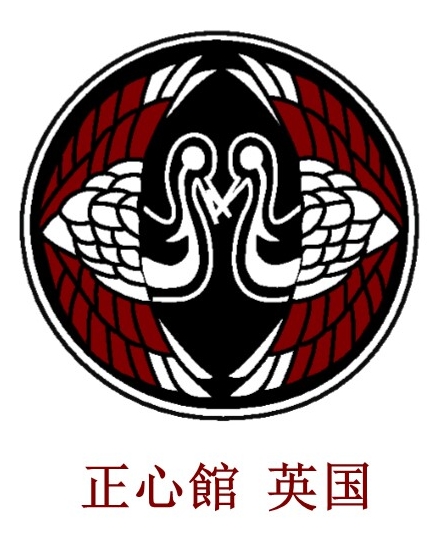G
GANMEN - Point on face between the eyes
GE - Side of dojo opposite Shinzen
GEDAN - Low
GEDAN KAMAE- Lower level, sword pointed down
GOKAI - Grandeur, large feeling, full motions
GOMEN NASAI - Excuse me, or I'm sorry
GO NO SEN NO WAZA (GO NO SEN) - Strike at a Suki e.g. the mind stopping. Strike before the opponent forms the intention to strike
GUNTO - War sword, usually refers to those made just prior to and during WWII
GYAKU - Reverse, opposite, inverted
GYAKU HASSO KAMAE – Shouldering the sword at the left side
GYAKU KESA GIRI - Diagonal upward cut
H
HA - Cutting edge
HABAKI - Fitting between Tsuba and blade, wedge for Koiguchi
HABUCHI - Boundary of the Yakiba
HAI - Yes
HAJIME - Start
HAJIME NO SAHO - Beginning etiquette
HAKAMA - Split skirt, wide legged pants
HA MACHI - Notch for Habaki, at edge side of blade
HAMON - Ha = edge, Mon = Pattern. The shape or style of the Yakiba, this does not necessarily exactly follow the shape of the Yakiba, however a polisher will sometimes "improve" it
HANE AGE - Flipping over (flipping up the blade)
HANMI - Half forward stance
HANSHI - Highest teaching title from ZNKR, must be 55 or older and 8 dan
HANTAI - The other way around
HARA - Abdomen
HASSO KAMAE - Figure 8 stance, sword by side of head. Usually Hasso Hidari, sword on right, left foot forward
HASUJI – The angle of movement of the edge, where the cutting edge is
HAYAKU - Quickly
HEIJOSHIN – Ordinary/Everyday mind
HEIKO - Parallel
HENKA WAZA - Small variations in same basic technique
HERA - Peg in back of Hakama
HETA - Unskilful, poorly done
HI - Grooves down Shinogi Ji
HIDARI – Left
HIJI - Elbow
HIKI KIRI - Pulling cut, usually when pulling over Teki
HIKI OTOSHI - Pulling down (either opponent/weapon)
HIMO - Straps/cords
HIRA - Face of the blade between Shinogi and Ha, includes Hiraji and Hamon
HIRAJI - Area of blade between Hamon and Shinogi
HIRAKI ASHI - Rear foot moves forward and turns to face opponent, front foot turns to establish feet again in Kamae but with opposite foot forward
HITOE - Back of Tang, meets Mune at Mune Machi, also called Nakago-Mune
HITOEMI - Equal stance, feet parallel forward
I
IAIDO - The way of drawing the sword
IAI GI – Practice jacket for Iaido
IAI GOSHI - Hips lowered, stable position
IAI HIZA, TATE HIZA - Kneeling with one knee raised
IAI KISOGEIKO - Fundamental practice
IAITO - Practice sword for Iaido, usually not sharp
ICHI MON JI - A straight line
IIE - No
IJO - That's all (after recitation)
IRIMI - Entering
J
JIGANE - Refers to the steel material. Jigane = skin steel. Shingane = core steel. These have different carbon contents. Appearance of the Jigane is controlled by the smith's folding technique, which can be of different patterns, coarseness etc.
JI GEIKO - Free practice
JIKU ASHI - Turning foot, the main axis of rotation
JINCHU - Centre of upper lip
JODAN - Upper level, sword above head, usually Hidari Jodan, left foot forward
JO HA KYU - Acceleration, build up to climax (slow-fastest)
JOSEKI (JO) - High side, Shinzen
JOSEKI NI REI - Bow to the high section of the dojo
JOZU- Skilful
JUNBI TAISO O HAJIME MASU - Begin warm-up
JUNBI TAISO O OWARI MASU - Warm-ups are finished
Seishinkan Dojo
Glossary of terms
On this page and the following pages we have included an alphabetical listing of most of the Japanese words, terms or expressions you are likely to encounter. The list which is shown with the Japanese word leading first is not comprehensive, but does allow you to familiarize yourself with technical jargon that you will come across during practice.









